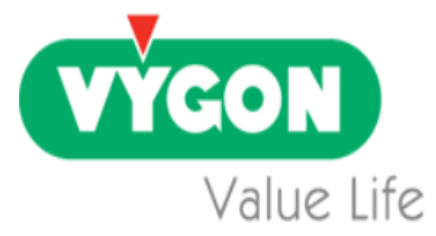Strong growth momentum accompanied by changing dynamics
The market for medical devices in China is predicted to reach $130 billion in 2020, with an annual growth rate of 11 percent from 2020 to 2025. This expansion will continue to be driven by the growing incidence of chronic diseases, rising healthcare expenditures due to income growth, and the proliferation of healthcare providers in China. China is projected to be the second biggest market for medical equipment behind the United States by 2030.
Market segmentation are evolving. More than half of the market for medical devices consists of medical equipment, with growth driven by imaging goods (e.g., intravascular imaging) and high-tech items such as robotic surgical systems. Twenty percent of the market is comprised of high-value consumables, and we anticipate that volume-based procurement (VBP), which went into force last year, will continue to put pressure on firms’ top lines and profit margins. The remainder of the market consists of lower-priced consumables and in vitro diagnostic items, which we anticipate will benefit from rising patient demand for medical care from smaller municipal-level and county-level hospital systems in secondary cities.
Domestic competitors are soon catching up. While Chinese businesses have typically led the market for mid- to low-priced medical gadgets, local competitors are increasingly establishing a stronger foothold in the premium sector. Over the last decade, the market share of domestic manufacturers of innovative diagnostic and treatment equipment has expanded from 20% to 30%. They have accomplished this by using advantageous rules, such as local high and new technology status to expedite product registration, inherent cost benefits resulting from local production, and rapid operating models. In 2020 alone, the number of newly-approved Class III domestic goods (China’s highest product level, which is subject to stringent restrictions) reached 1,020, which is three times the number of imported items.
Investments in the sector are intensifying. The market for medical equipment in China is undergoing growing consolidation and investment interest as more parties recognize its expanding potential. In China, there were 33 medical device mergers and acquisitions in the first half of 2021, which is greater than the entire number of agreements in 2020. In addition, investment in medical equipment has hit a new peak, with 217 agreements signed in the first half of 2021, a 78 percent rise from the same period the previous year. The acquisitions were valued at $30 billion, a 51% rise from the previous year. In addition to market categories pushed by Covid, such as in vitro diagnostics, investors have demonstrated a growing interest in sectors with substantial domestic market substitution potential. These include cardiovascular equipment and orthopedics devices, two of the first VBP categories in which competitive product pricing was the principal strategy for gaining a dominating market position in hospitals.
China’s regulatory climate is hard for multinational corporations, yet possibilities exist.
Since its release in 2016, Healthy China 2030 has set the Chinese government’s healthcare objectives, vision, and guiding principles. It clearly sets the tone for a policy framework that seeks to improve health care quality, affordability, and accessibility. In light of this general trend, multinational companies (MNCs) will continue to confront a hard regulatory environment, but there will also be possibilities.
The top and bottom lines of multinational corporations will remain under pressure. Volume-based procurement (VBP), in which the bidder with the lowest price is allocated at least 70 percent of a product category’s procurement quota in participating markets, has only been in place for a year, but its impact has been revolutionary. While unsuccessful bidders cannot rebid for one to two years, successful bidders reduced their rates by more than 90 percent in return for volume guarantees.
Unfortunately for medical equipment manufacturers, VBP will become standard practice. In addition, its scope has increased from high-priced consumables to major medical equipment, low-priced consumables, and IVD testing, with additional procurement cycles commencing at the end of 2021. The unpredictability of VBP bidding and the consequential impact on revenues are compelling businesses to rapidly reevaluate their strategy, from product offering to channel coverage, and to make their current supply chains more flexible and cost-effective.
In addition to value-based purchasing, hospital payment mechanism improvements are changing from a retrospective cost-based system to a prospective diagnosis-related group (DRG) or diagnosis-intervention package (DIP)-based approach. This modification will have an even greater influence on hospital demand for medical products. Under DRP and DIP, the National Healthcare Security Administration (NHSA) reimburses hospitals based on a patient group standard based on illness diagnosis, rather than real hospital expenditures. This payment model demands hospitals to limit expenses according to each group’s standard in order to generate reimbursement surplus and finance the hospital’s growth.
The NHSA said on November 26, 2021, that DRG/DIP would be introduced statewide by the end of 2025, after two years of test programs in certain locations. With the widespread implementation of DRG/DIP, hospitals will analyze the cost-effectiveness of equipment and consumables even further. In China, medical device businesses that cannot demonstrate the superior clinical value of their goods will struggle to survive.
Import substitution is posing a growing danger. The Chinese government launched “Made in China 2025” as an umbrella program to stimulate the development of indigenous high technology goods to replace imports. As the Chinese government adopts direct laws limiting hospital procurement, the pace of replacement of medical gadgets will rise over the next several years.
The objective is lofty. As outlined in current legislation, the goal is to increase the domestic usage of medical devices in hospitals of higher class to 70 percent by 2025 and 95 percent by 2030. Early in 2021, further specific recommendations was released to expedite local procurement, recommending that 137 medical device categories be bought wholly locally and 12, 24, and five medical device categories be procured domestically at 75%, 50%, and 25%, respectively. Patient care is categorized alongside surgical gadgets and MRI equipment.
Meanwhile, China continues to promote innovation. In 2020, a laundry list of new medical device goods, including the production of AI medical assistance equipment, wearable intelligent health equipment, and minimally invasive surgical medical equipment, were added to the Foreign Investment Encouraged Catalogue. Moreover, the government has developed a number of programs to promote innovation. Under the fast-track approval process, the government provided patents for fundamental technology, improved application access, and accelerated approval times for newly developed medical devices.
These advantages help local firms to capitalize on innovation investments more quickly. The separation of Marketing Authorization Holder status from manufacturing decreases the complexity and cost necessary for innovation since corporations no longer need to control the full value chain. This enables new collaboration and investment models for bringing innovative goods to market.
Profiting in China necessitates a revised approach.
As a major focus of the 14th Five-Year Plan, “Dual Circulation” recognizes China’s lack of innovation in fundamental technologies, hence indicating continuous prospects for advanced foreign technologies. Foreign manufacturers of medical devices may still prosper in China’s burgeoning industry despite intensifying pricing competition and rising regulatory obstacles.
Localize. As volume transfers to lower-tier markets, there will be a greater need for foreign enterprises to extend their footprints outside multinational corporations’ conventional tier-one, tier-two, and Class III towns and hospitals. Various strategies, including locally specialized teams, CSO-led demand generation marketing, and expanded in-house digital platforms, have been employed by businesses to assist them thrive as they expand their market capabilities. Expansion into new markets may provide permanent competitive advantages and enables multinational corporations to maintain their size and relevance under the VBP. Investment in China’s secondary cities must be a strategic requirement for multinational corporations seeking a balanced strategy.
While local infrastructure investments traditionally begin with commercial operations, multinational corporations are increasingly localizing R&D and production to react more swiftly to the market and gain financial, regulatory, and market access advantages. MNCs have implemented strategies beyond typical greenfield investment and acquisitions to manage investment risks and business effect while making investments to achieve development.
Technology out-licensing, commercial alliances, and OEM services are typical methods for launching goods in China more quickly and efficiently. Some businesses have profited from revisions to the Market Permission Holder rules, which now allow them to register their items as local products through authorization to local businesses. Minority investments with buyout options related to distribution partnerships are also gaining popularity among multinational corporations (MNCs) in China, since these investments let MNCs to utilize their commercial platforms and profit on local innovation.
Local dangers exist in China, but they may be minimized by enhancing country-specific operations and activities. Companies with remarkable success in China are those with a worldwide commitment to early China involvement in decision-making processes. By using local partners, they may often educate and lead the market. Those that introduce unique items that are fit for the local market will face less competition from local imitators.
Enhance the business’s resiliency. Geopolitical tensions, the pandemic, and tough municipal regulations such as VBP underscore the need for firms to adjust rapidly to uncertainty. Local government affairs teams are becoming more important to evaluate the practical consequences of regulatory or policy changes and to interface with regulators in a timely manner. Historically, global headquarters have controlled local government affairs.
In the face of unclear VBP results and probable geopolitical conflicts, supply chain resiliency is also essential. To maintain supply continuity, businesses are analyzing the adaptability of their local distribution networks and discovering alternate global supply sources and product flows.
In addition, while expanding to the larger Chinese market, businesses must preserve their company culture as the cornerstone for sustained success. In addition to enhancing standards for ethical behavior and compliance with the company’s non-disclosure agreements, this is the time for the majority of businesses to revisit internal control systems and develop new standards for government affairs, intellectual property protection, cyber security, local finance, and legal control measures.
The diversity of local investment situations may pose a danger and, in certain circumstances, have a negative effect on how multinational corporations (MNCs) want to operate in China. However, if implemented properly, these solutions may give genuine possibilities and generate shareholder value.











